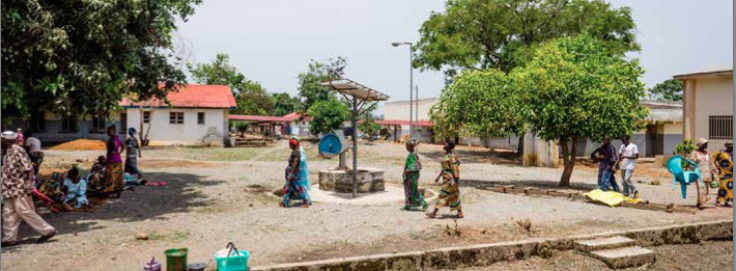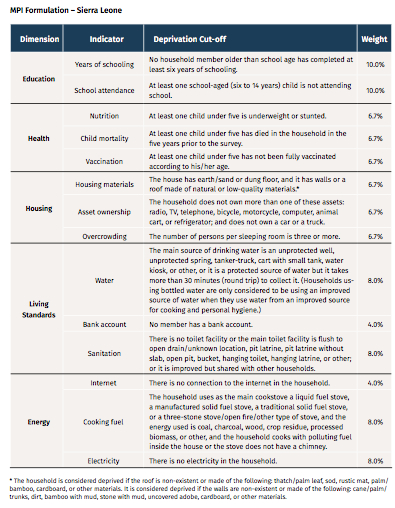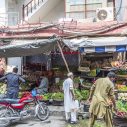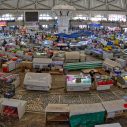
Search
Sierra Leone Launches a National MPI

In May 2019, Sierra Leone became one of the first countries in Africa to publish a national Multi- dimensional Poverty Index (MPI-SL). The MPI-SL comprises five dimensions and 14 indicators and identifies a person as being multidimensionally poor if they experience more than 40% of the deprivations included in the measure.
The results of the report show that 64.8% of the population of Sierra Leone is multidimensionally poor and that, on average, those living in multidimensional poverty suffer deprivations in 58.9% of the indicators. At the national level, sanitation, electricity, and years of schooling are the indicators that contribute the most to the country’s MPI.
The MPI-SL also reveals important differences between rural and urban areas. The proportion of the population living in multidimensional poverty in rural areas is more than double that in urban areas (86.3% and 37.6%, respectively).
At the national level, sanitation, electricity, and years of schooling are the indicators that contribute the most to the country’s MPI.
When examining the findings by province, results indicate that the Southern Province (76%), Northern Province (75.8%), and Eastern Province (67.6%) have the highest poverty rates, whilst the urban Western Province has the lowest (36.2%).
The source for the MPI-SL data is the 2017 Multiple Indicator Cluster Survey (MICS). The report, Sierra Leone National Multidimensional Poverty Index 2019, was prepared by the Ministry of Planning and Economic Development and Statistics in Sierra Leone with financial and technical support from the United Nations Development Programme (UNDP) in collaboration with the Oxford Poverty and Human Development Initiative (OPHI) of the University of Oxford.
This article was published in Dimensions 8.

















